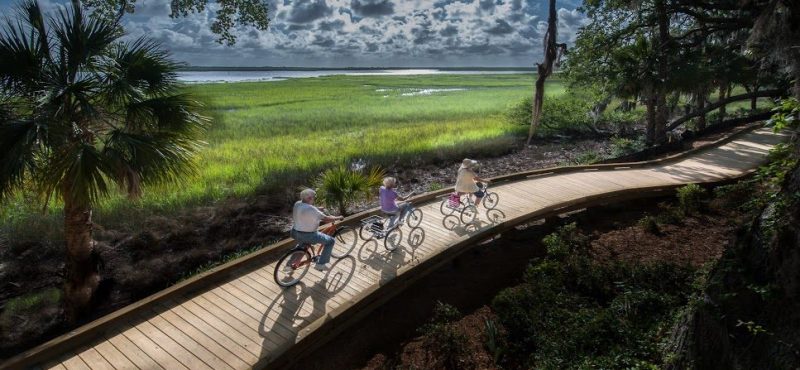
Land and transportation uses have significant impacts on health care issues in America. A survey conducted by the National Highway Transportation found that the number of cars in every household is more than the number of drivers. People who live in sprawling suburbs have a tendency to drive, rather than cycle or walk to fulfil their fundamental transportation needs, and have a higher risk of suffering from hypertension. This dramatically outweighs residents in the compact or dense areas. Sedentary lifestyles are linked to more than 20% of deaths from critical chronic diseases. Other studies have shown that diet and activity patterns account for 14% of all deaths in America. When combined, these factors are a major leading cause of death in America. Walking and cycling are great activities that can help reduce the medical expenditures resulting from sedentary lifestyles. Also, regular cycling activities increase health-related benefits. For example, cycling thrice per week reduces systolic blood pressure by 9 points, while cycling on a daily basis lowers it by 13 points. Cycling for half an hour daily burns about 11.4 lbs in one year. A person who starts cycling at the age of 35 and circles for 60 miles per week could increase their life expectancy by two and a half years. In addition, an individual who participates in activities that develop endurance, flexibility, muscular strength, and balance is less prone to disability and injury and is more productive in the community and at work.
The Coastal Georgia Greenway trail regularly contributes to enhancing the social fabric and quality of life. By developing ways in which families and individuals can recreate together, trails promote community cohesion by promoting social relationships. Also, trails create an aesthetic value through increasing green space in regions where land-use issues are more often than not driven by commercial and residential development. Trails offer users a first-hand opportunity to grasp, appreciate and enjoy significant heritage values and themes. Of importance to the Coastal Georgia Greenway, is the fact that travellers are more interested in the education-oriented opportunities offered by the historical and cultural sites, which is one of the fastest-growing sectors of tourism. The coastal Georgia Greenway trail offers a window into America’s culture and history through linking various sites and making them easier to interpret into a broader context and making them easily accessible. This results in more frequent use and helps preserve sites for future generations by increasing appreciation and awareness among the current generation.
Environmentally, the Coastal Georgia greenway trails are an instrument of conservation and water and air quality management. As protected open areas, trails preserve essential natural habitats and landscapes. Trails regularly offer the much-needed links between natural areas and ecological communities. Walking and cycling are non-pollutant and do not require the use of fossil fuels and are, therefore, contributors to better air quality. Over many years, walking and cycling trips can save hundreds of millions and even billions in gallons of gas and decrease air pollution emissions significantly (not to mention avoiding a myriad of issues related to credit and debt). This airborne pollution displacement takes place at the ground level, where most of us breathe. Also, the trips that attract walkers and cyclists 5 miles or less are often the same trips that are fuel inefficient and produce the highest emissions per mile. The Coastal Georgia Greenway trails improve water quality by offering natural buffer zones and protecting waterways from the pollution that occurs due to pesticides and fertilizer run-off. Reduction or improved control of this pollution improves the environmental circumstances of aquatic life by enhancing the water quality, which is one of the essential resources in the Coastal Georgia region.